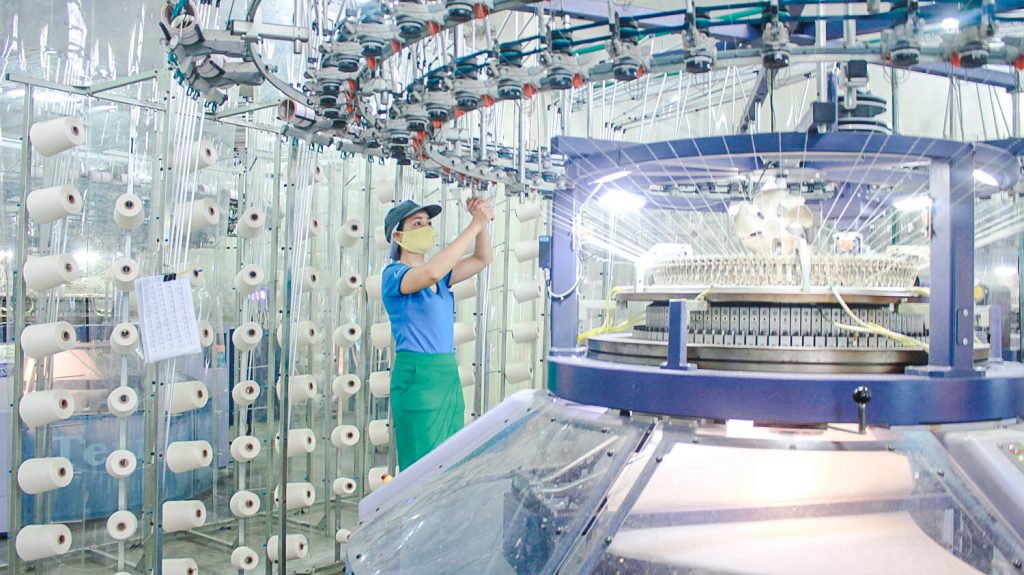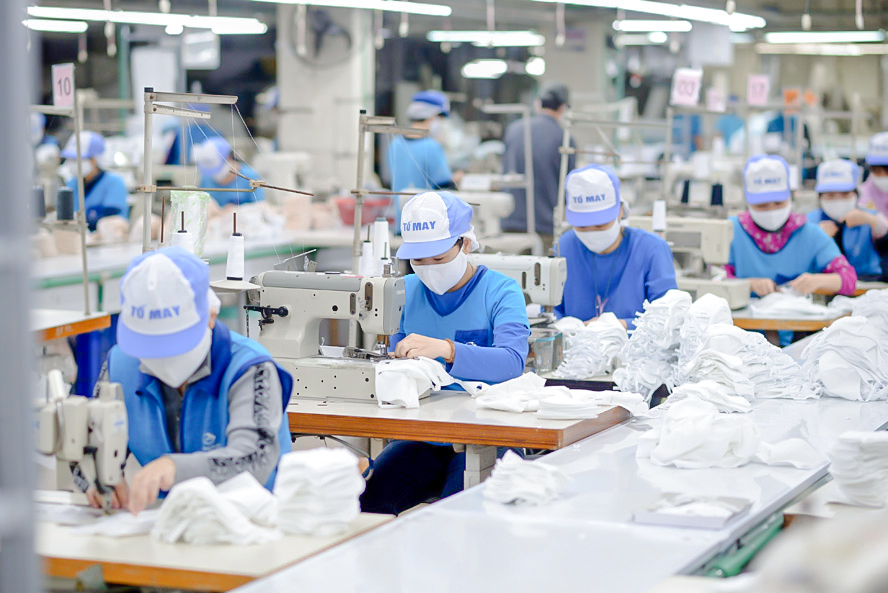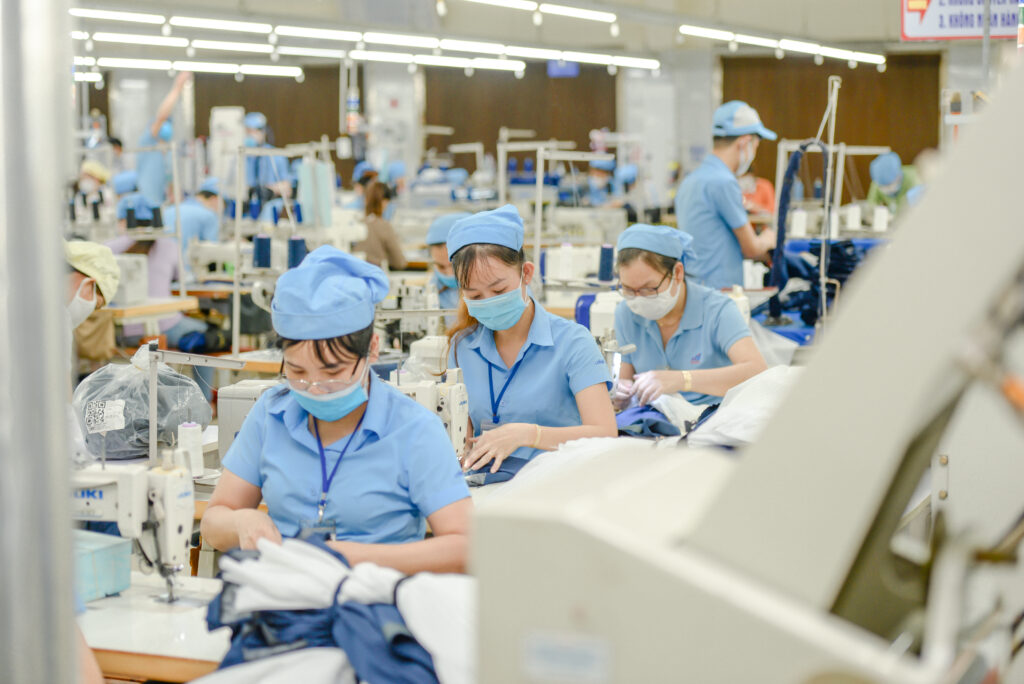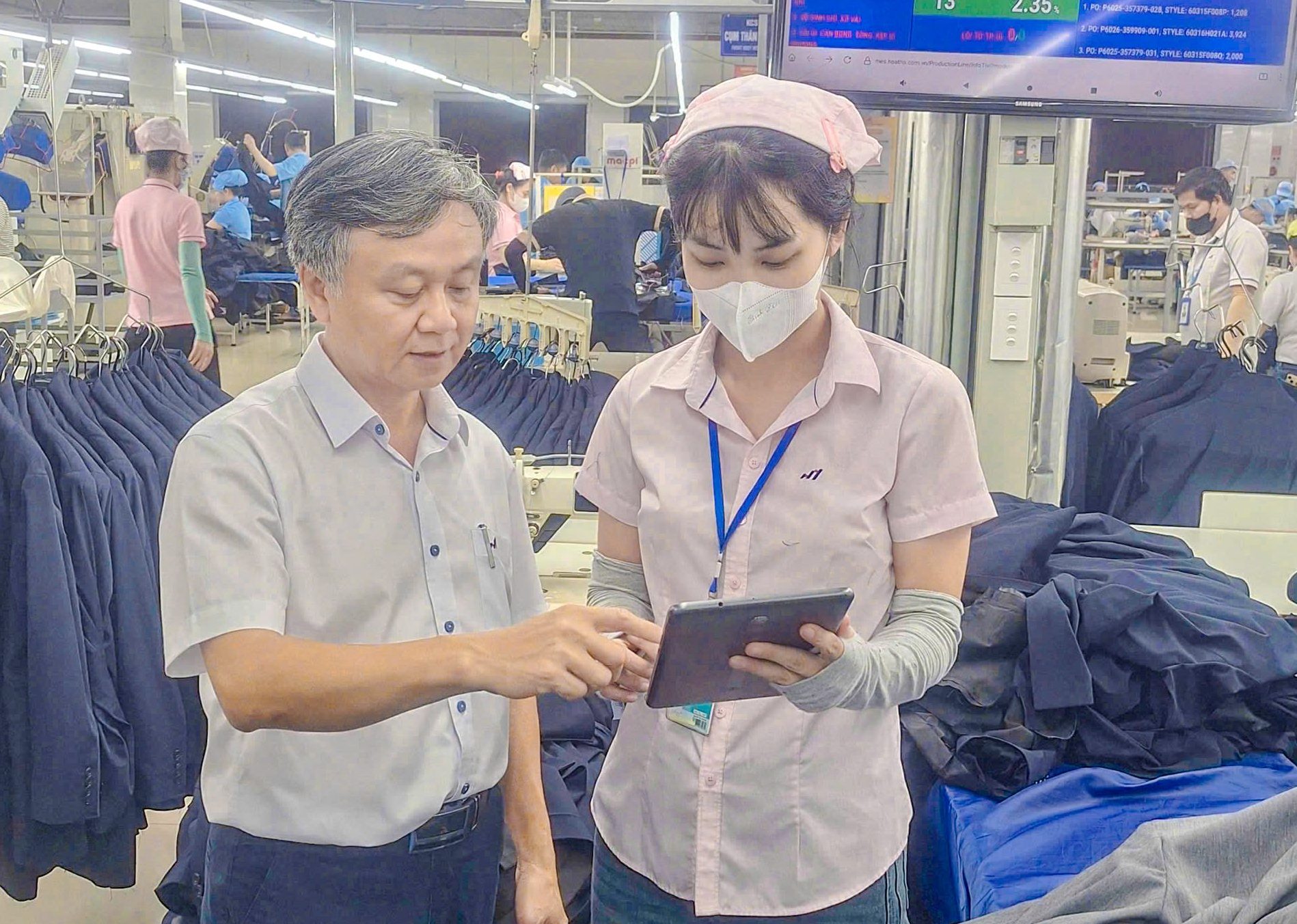Political instability in Bangladesh has created opportunities for shifting orders to other textile-garment exporting countries. Is there a chance for Vietnam to receive a wave of orders in the final months of 2024 and early 2025?
What opportunities are there for Vietnamese textile & garment enterprises?
According to data from the General Department of Vietnam Customs, Vietnam’s textile and garment exports in July 2024 reached USD 4.3 billion, up by 12% y-o-y. Continuing this growth trend, textile and garment exports in August 2024 reached USD 4.66 billion, up by 14.6% yoy. This marks two consecutive months where Vietnam’s textile and garment exports surpassed USD 4 billion, a significant achievement since August 2022. Data from the Vietnam Textile and Apparel Association (VITAS) shows that total textile and garment exports in the first eight months of 2024 reached over USD 28.6 billion, a 7.2% rise compared to 2023. This impressive growth comes after months of challenges in the textile garment industry regarding markets, orders, and processing unit prices.
In July 2024, political conflict in Bangladesh escalated, with violent protests and demonstrations against public sector job quotas, which then intensified into broader political tensions. As the world’s second-largest textile garment exporter, where the industry accounts for nearly 90% of total export revenue, the conflict severely impacted Bangladesh, forcing many factories to shut down. According to The Business Standard of Bangladesh, the Bangladesh Garment Manufacturers and Exporters Association announced the closure of all member factories for three days, as directed by the government. Additionally, many businesses in the country are facing a 25-40% decline in orders.

Mr Nguyen Dang Loi, General Director of Dong Xuan Knitting Company, noted that since Q4 2023, the textile garment market has shown signs of recovery. The 2024 global textile garment demand is forecasted to increase by 5-6% compared to 2023, although it has not fully returned to pre-COVID-19 levels. Furthermore, the political instability in Bangladesh has created opportunities for importers to seek out Vietnamese enterprises. Dong Xuan Knitting, for example, has secured orders through Q2 2025 and is continuing to negotiate new contracts.
“In the first eight months of 2024, our company’s export value reached USD 7.8 million (66% of the annual plan). With 90% of our exports going to the Japanese market, we expect to export over 5 million textile and garment products to Japan in 2024. Additionally, the depreciation of both the Vietnamese dong and Japanese yen against the US dollar will also enhance the effectiveness of export businesses,” said the General Director of Dong Xuan Knitting.
Sharing the same viewpoint, Ms.Hoang Thuy Oanh, Deputy General Director of Hoa Tho Textile and Garment Corporation, noted that since August, there has been an increase in garment orders, although it is unclear whether these are from Bangladesh or China. The higher number of orders has provided the company with more opportunities to select better-priced orders, and overall, orders are expected to remain plentiful until the end of 2024, improving production conditions compared to 2023.
Ms Oanh also stated that the surge in orders might be due to the shift from Bangladesh, given that this is the production season for the 2025 winter-spring collection, coinciding with Christmas and New Year preparations. Discussions with partners have revealed that Bangladesh garment companies have faced delivery delays of about 2-3 weeks due to the political instability.

While the garment sector is benefitting from opportunities arising from Bangladesh’s political instability, Vietnam’s yarn sector continues to face challenges, as the key export market- China has yet to show significant signs of recovery. Ms. Nguyen Thi To Trang, General Director of Vinatex Phu Hung Joint Stock Company, remarked that while the yarn industry has seen a notable recovery in both demand and unit price during the first eight months of 2024, it still faces difficulties due to the global decline in consumer demand and the negative impact of political instability in some countries. These factors have created pessimism among investors and consumers, slowing global economic recovery. Additionally, in recent years, the scale of Vietnam and the global spinning sector, has expanded significantly due to investments in broadening scale and high-productivity equipment, leading to increased supply and competitiveness within the industry.
“As a company with a high export ratio to the Chinese market, we are not only affected by the overall decline in Chinese textile garment demand but also by changes in China’s textile garment policies related to the Xinjiang Forced Labor Prevention Act. China has expanded its domestic spinning capacity to consume cotton from Xinjiang, reducing imports of traditional yarn products from countries like Vietnam, India, Pakistan, Indonesia, and Bangladesh. In the short term, there is unlikely to be a significant breakthrough in yarn demand and pricing in 2024. However, Q3 and Q4 are typically peak seasons for meeting the year-end holiday demand, and many brands will also need to replenish their inventories for the following year. As a result, there is some expectation of a relative recovery in demand and pricing in the coming months. Major brands such as Target, Walmart, and Under Armour have shown positive signs, with a sharp decrease in inventory and significant improvement in profits. It is expected to recover by the end of 2024 and promise a stronger breakthrough in 2025, ” the General Director of Vinatex Phu Hung emphasized.
Maximizing Capacity and Competitive Advantages
According to VITAS, Vietnam has set a target of achieving USD 44 billion in total textile and garment exports for 2024, a 9% increase compared to 2023. With an accumulated value exceeding USD 28 billion in the first eight months, Vietnam needs to reach an average of USD 4 billion per month for the rest of the year to meet this goal. The latter half of the year is the peak season for orders and production for Christmas and New Year, so with the growth seen in the past two consecutive months, the industry’s chance of reaching this target is relatively high.
Ms Hoang Thuy Oanh expressed: “Based on experience, observation, and working with clients, we predict that the order shift trend will be short-term, as the peak production season for the 2025 Winter-Spring collection is currently underway. In Bangladesh, many orders are delayed due to political instability. Once the interim government in Bangladesh takes over and trade activities resume, brands will likely continue choosing Bangladesh for low-cost knitwear orders and large orders due to their competitive pricing advantage of cheap labor. Vietnamese textile garment companies cannot compete on price with Bangladesh, where wages are three times lower than in Vietnam. Even for woven products and high-tech items, Bangladesh can produce them at modern, well-invested factories, not just traditional knitwear.”

“The opportunity for Vietnam is present from now until the end of 2024. However, moving into 2025, the order shift will end, and competition will return to each country’s strengths and production capabilities” analyzed the Deputy General Director of Hoa Tho Textile.
To capitalize on even the smallest market opportunities, the General Director of Dong Xuan Knitting stated that businesses must proactively adjust production and business strategies to adapt to the market, actively seek partners and customers, and expand markets to ensure jobs. To achieve this, Dong Xuan will focus on several key tasks: (1) Improving technology processes to reduce production costs (electricity, steam, water, chemicals, labor, etc.), thereby increasing production efficiency and creating a competitive price advantage; (2) Investing in and upgrading equipment in production lines to diversify products and expand the current customer base and market; (3) Emphasizing training and retraining to enhance the skill level of workers, boosting labor productivity; (4) Investing in research and development (R&D) to create new, unique fabrics and products to attract customers and secure FOB orders; (5) Developing high-end knitwear products to strengthen and promote the company’s brand; (6) Domestic consumption solutions: seeking and expanding distribution channels, targeting niche markets, and B2B customers to boost sales.
Regarding the yarn sector, Nguyen Thi To Trang said that to overcome current challenges and seize opportunities as the market positively shifts, the company has focused on improving product quality, maintaining traditional customers and markets, and expanding into new markets with new product lines. Additionally, the company is implementing cost management solutions and investing in automation to reduce labor costs. Furthermore, enhancing transparency and traceability of goods is a crucial requirement for the yarn sector in the coming period, demanding strong commitments from spinning mills.
“In the current situation where spinning units are struggling with difficulties in the market fluctuation over the past two years, the State Bank and credit institutions need to implement supportive policies for textile enterprises, avoiding further cuts to credit limits and increases in loan interest rates for spinning businesses. Additionally, the rise in input costs, such as an increase in regional minimum wages and electricity prices in 2023 (3% and 4.5% respectively), has put further pressure on spinning companies. The government needs to introduce policies to help manage these rising costs. With electricity costs accounting for nearly one-third of the processing cost per kilogram of yarn (excluding raw material and sales costs), it is crucial for the government to adopt measures to reduce the pressure of increasing input costs to create better competitive advantages for Vietnamese businesses in general and spinning companies in particular,” emphasized the General Director of Vinatex Phu Hung.
Translated from the article published in the September 2024 issue of Textile-Garment and Fashion Vietnam Magazine.





